Refreshed Volkswagen Touareg does the heavy lifting for long-distance travel
The new Volkswagen Touareg R eHybrid is the people’s luxury SUV, capable of going anywhere and doing anything. Does it stack up to rivals?
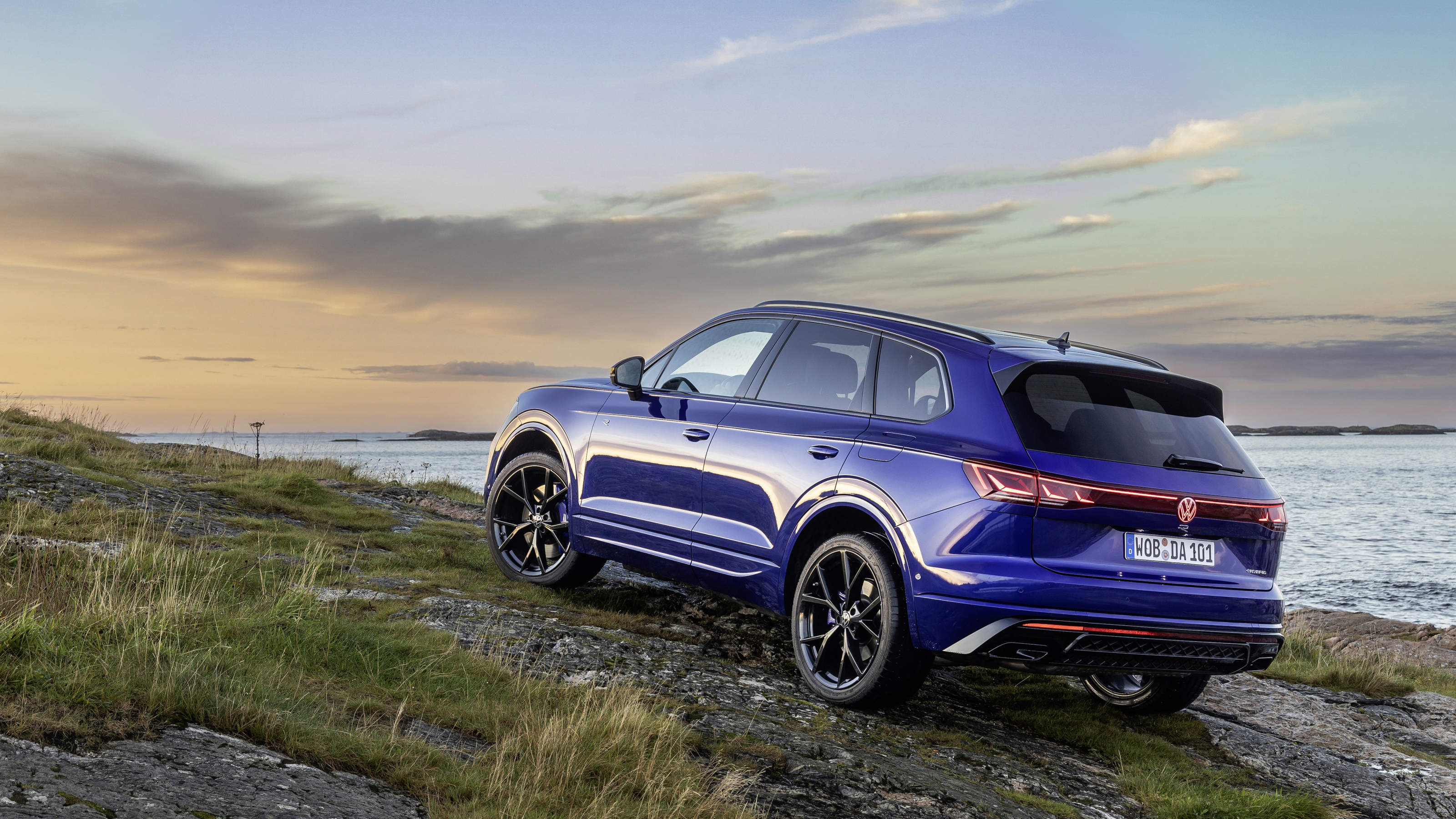
We kick off 2024 with our experiences with the lightly refreshed Volkswagen Touareg R eHybrid, the flagship version of the company’s flagship model, the absolute summit of the brand. The Touareg was launched way back in 2002 to get VW into the all-important SUV sector. Now in its third generation, it’s actually designated as a ‘mid-size’ SUV in auto-industry terms, although by European standards it clearly sits at the upper end of the scale.
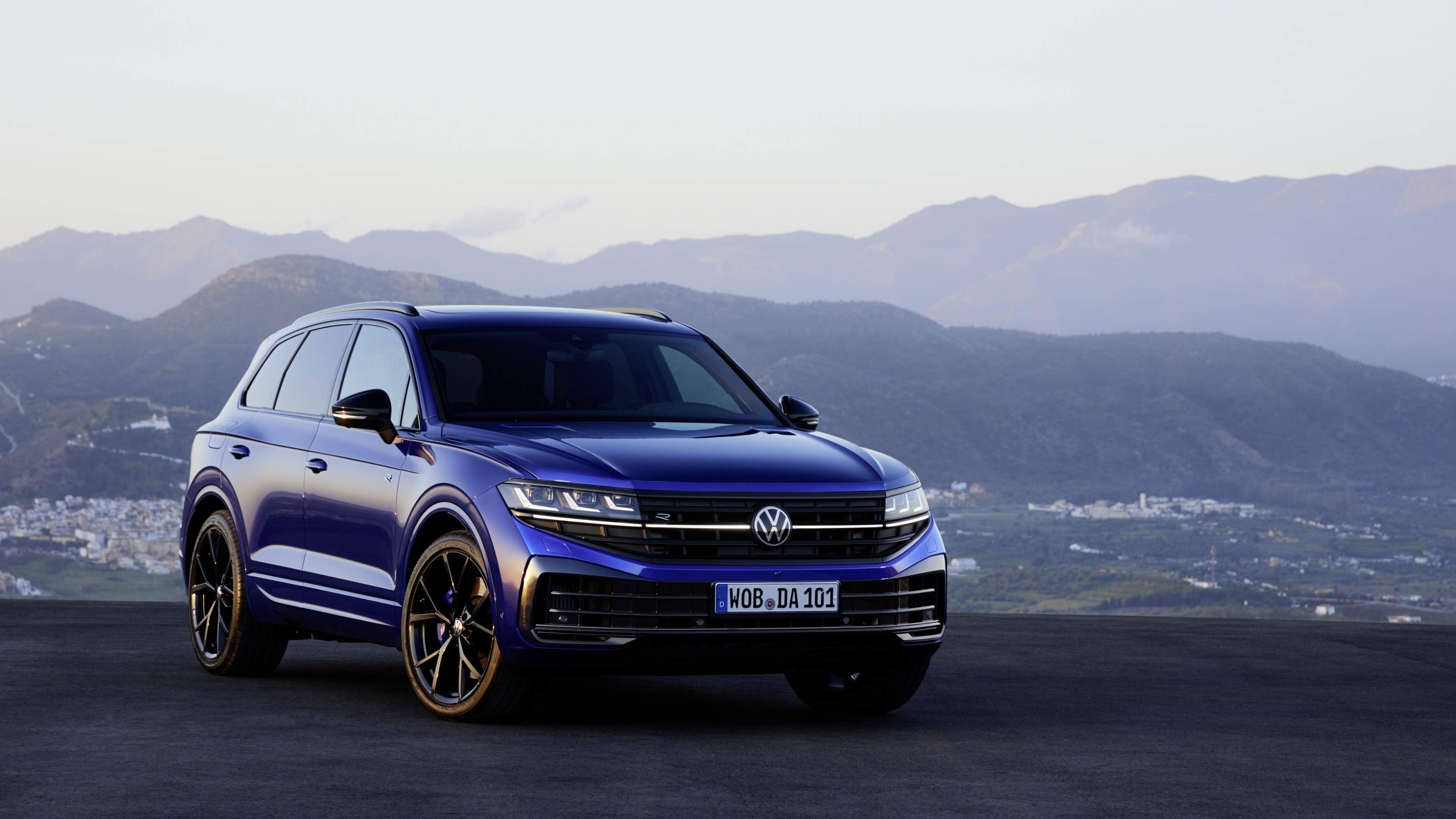
As it stands, the Touareg has more in common with its close mechanical cousins, the Audi Q8, Bentley Bentayga, Porsche Cayenne and Lamborghini Urus, than it does with any other VW, even its (smaller) SUVs. That is to say that it prioritises plushness, performance and comfort over any sense of ‘utilitarian mobility’. For instance, switch to ‘sport’ mode – which adds extra boost from the electric motor – and the interior lighting scheme transforms the cabin into a Chippenham nightclub, all lairy red and black. It’s not subtle.
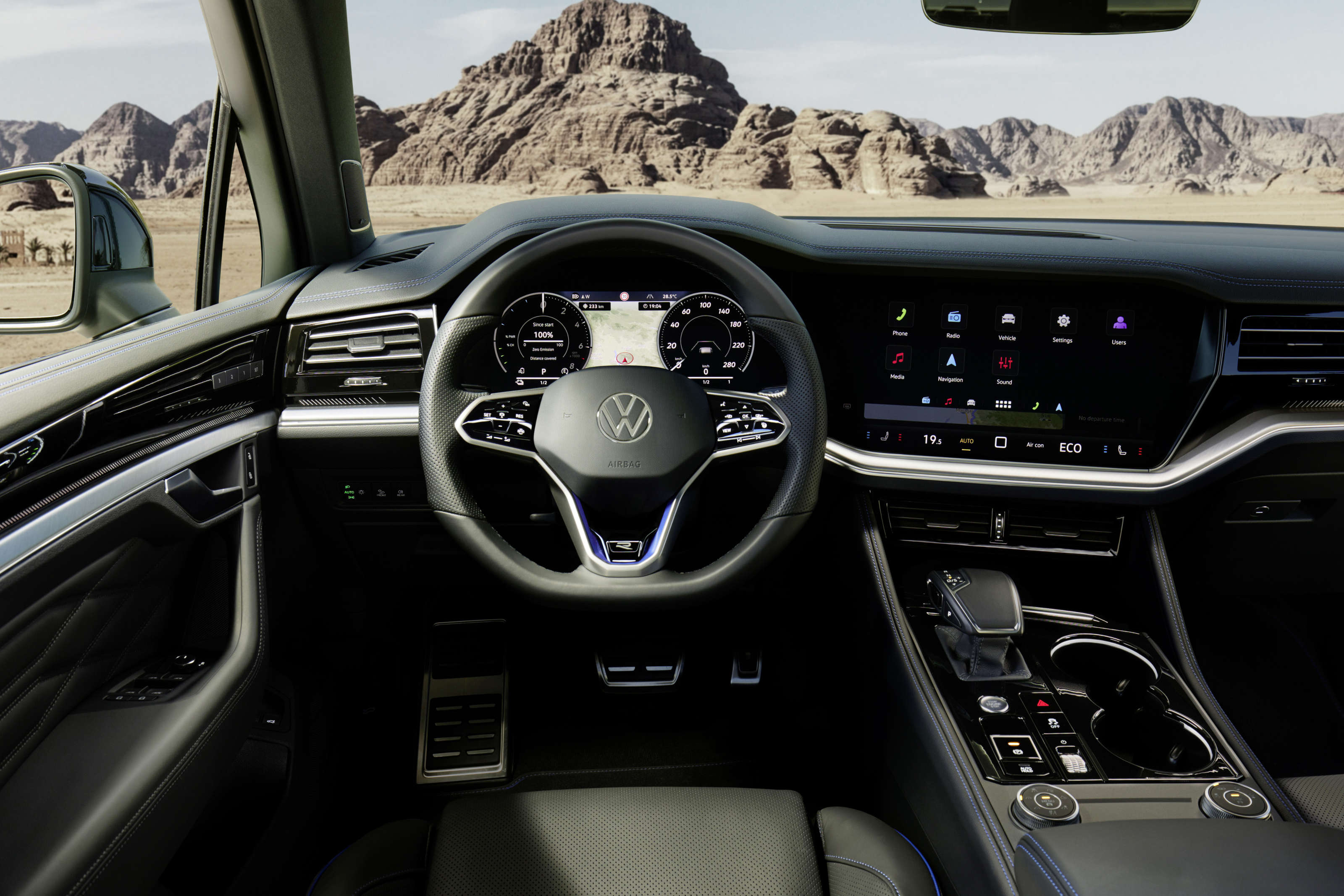
In R eHybrid form, at the very top of the VW product tree, this means you’re looking at an £80,000 car, fully laden with an acronymic blizzard of options to assist with progress on and off the road, from highways to parking garages. Truth is, you need a fair bit of help to guide the big Touareg through cities with any degree of precision, such is the scale of this 4.9m-long machine (well over 2m wide including wing mirrors).

Powering all this is a petrol V6 linked to an electric motor and battery pack; the latter gives an electric-only range of around 30 miles. As with all plug-in hybrids, a projected and practical use case is to charge at home for regular short trips, keeping the ICE on hand for longer journeys. All well and good, but the fact remains that you’ll be hauling around 3,000kg of largely redundant technology on the off chance you’ll need to run to the shops as well as traverse a massive sand dune on the same afternoon.
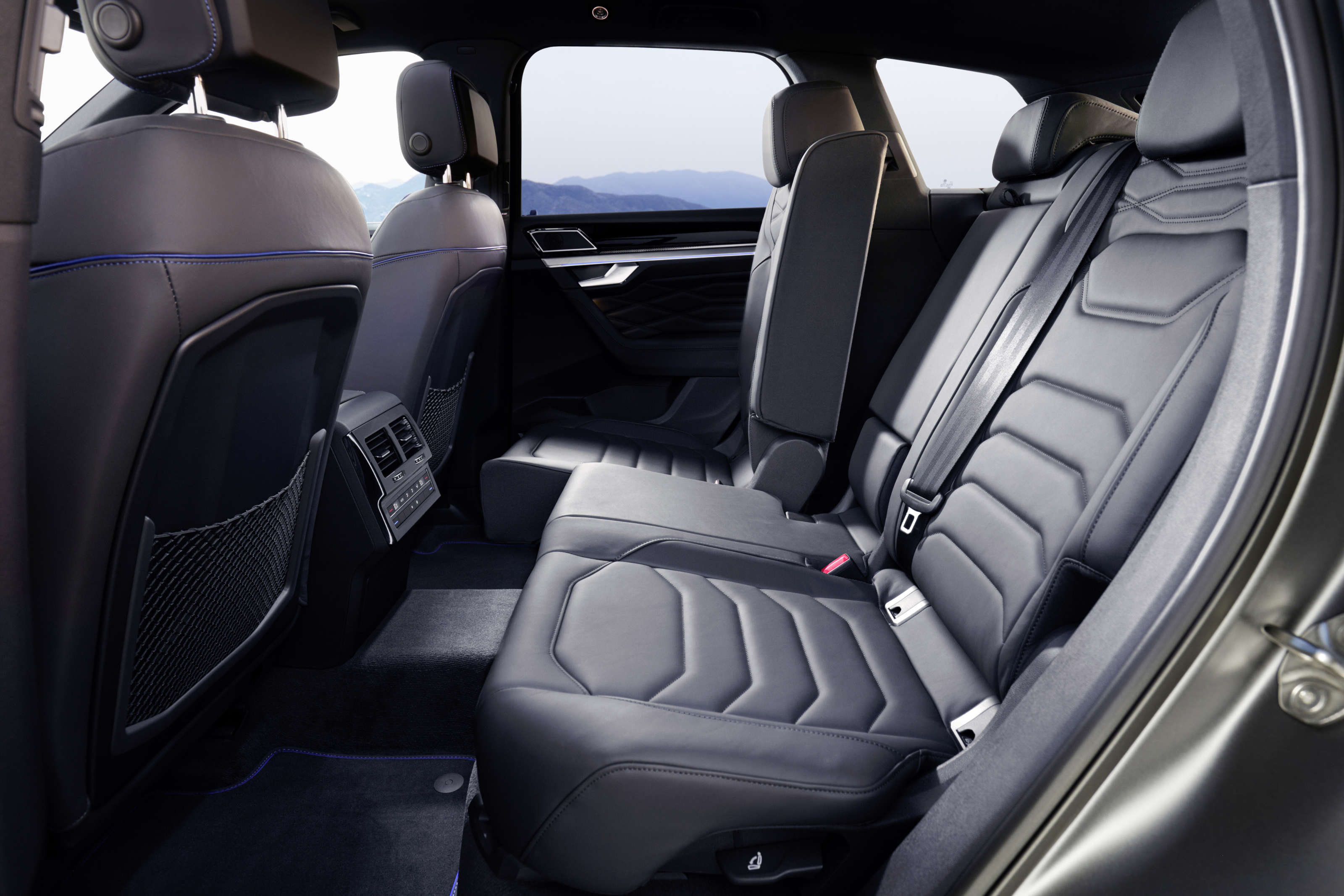
Like many big SUVs, the Touareg offers occupants a sense of impervious detachment from the world, swathed in a layer of technology that cossets, entertains and occasional infuriates (touchscreen-only controls for the heating and aircon, for example). A power output of 455hp means that performance is never lacking, although the aforementioned sport mode ensures everyone on board is well aware of your profligacy.
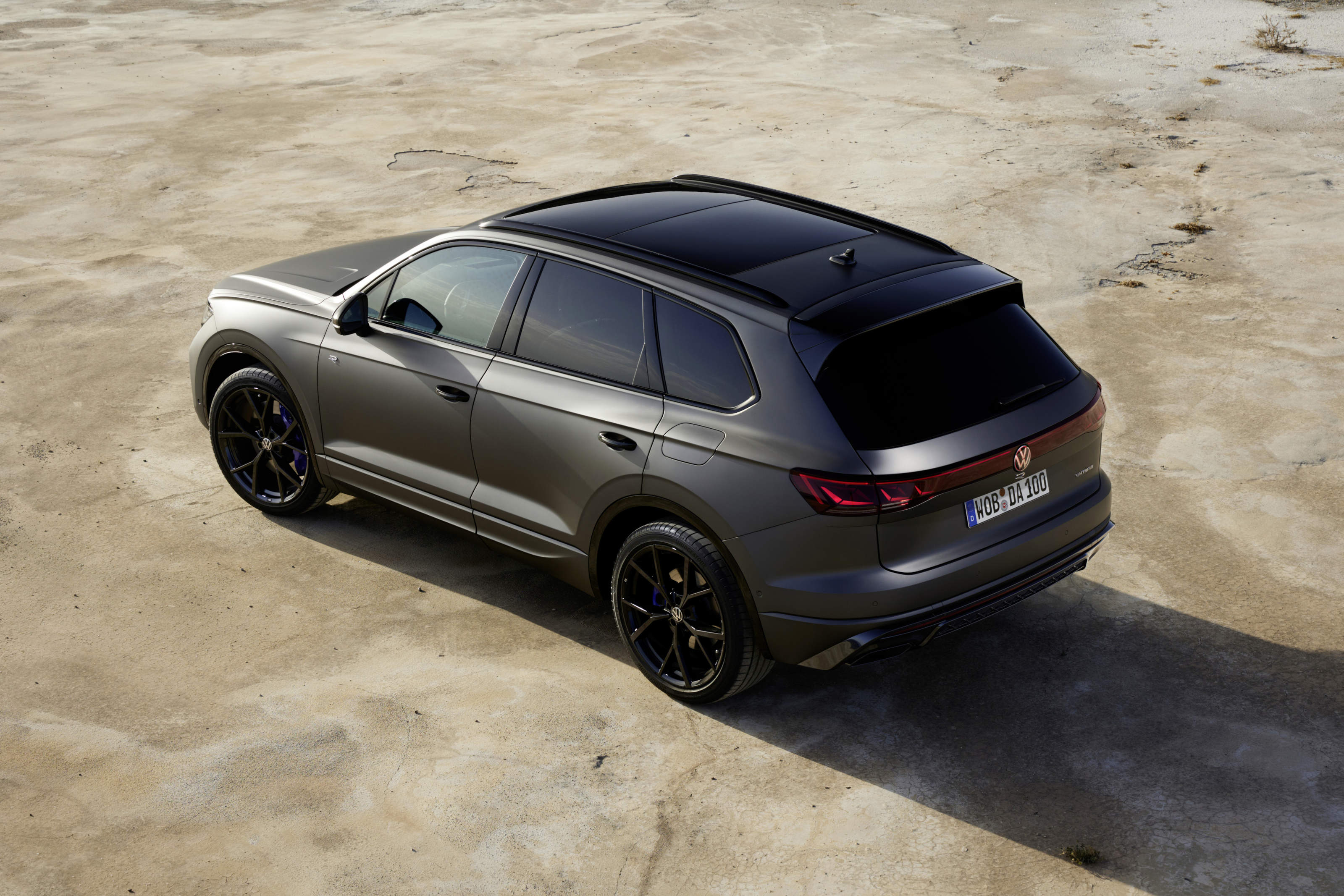
The world of hybrid SUVs currently offers no half measures. In fact, it’s something of a shock to delve into VW’s current line-up and discover that the brand makes no fewer than eight different SUVs, the T-Roc, Taigo, T-Cross, Tiguan, Tiguan Allspace, the electric ID.4 and ID.5 and the flagship Touareg. Over the Atlantic, there’s also the even larger Atlas and Atlas Sport.

How much longer can this Swiss Army knife approach to car design and engineering survive? The Touareg and its ilk sit at the peak of the auto industry’s imminent tipping point; at some point in the not-too-distant future, battery tech will have sufficiently evolved to make small electric cars a truly viable economic proposition. The current glut of huge hybridised and electric SUVs demonstrates that we’re not there yet. Sure, cars like the Touareg demonstrate that you can have it all in one package, but the costs are high for everyone.
Wallpaper* Newsletter
Receive our daily digest of inspiration, escapism and design stories from around the world direct to your inbox.

Volkswagen Touareg R eHybrid, from £80,710, Volkswagen.co.uk
Jonathan Bell has written for Wallpaper* magazine since 1999, covering everything from architecture and transport design to books, tech and graphic design. He is now the magazine’s Transport and Technology Editor. Jonathan has written and edited 15 books, including Concept Car Design, 21st Century House, and The New Modern House. He is also the host of Wallpaper’s first podcast.
-
 Put these emerging artists on your radar
Put these emerging artists on your radarThis crop of six new talents is poised to shake up the art world. Get to know them now
By Tianna Williams
-
 Dining at Pyrá feels like a Mediterranean kiss on both cheeks
Dining at Pyrá feels like a Mediterranean kiss on both cheeksDesigned by House of Dré, this Lonsdale Road addition dishes up an enticing fusion of Greek and Spanish cooking
By Sofia de la Cruz
-
 Creased, crumpled: S/S 2025 menswear is about clothes that have ‘lived a life’
Creased, crumpled: S/S 2025 menswear is about clothes that have ‘lived a life’The S/S 2025 menswear collections see designers embrace the creased and the crumpled, conjuring a mood of laidback languor that ran through the season – captured here by photographer Steve Harnacke and stylist Nicola Neri for Wallpaper*
By Jack Moss
-
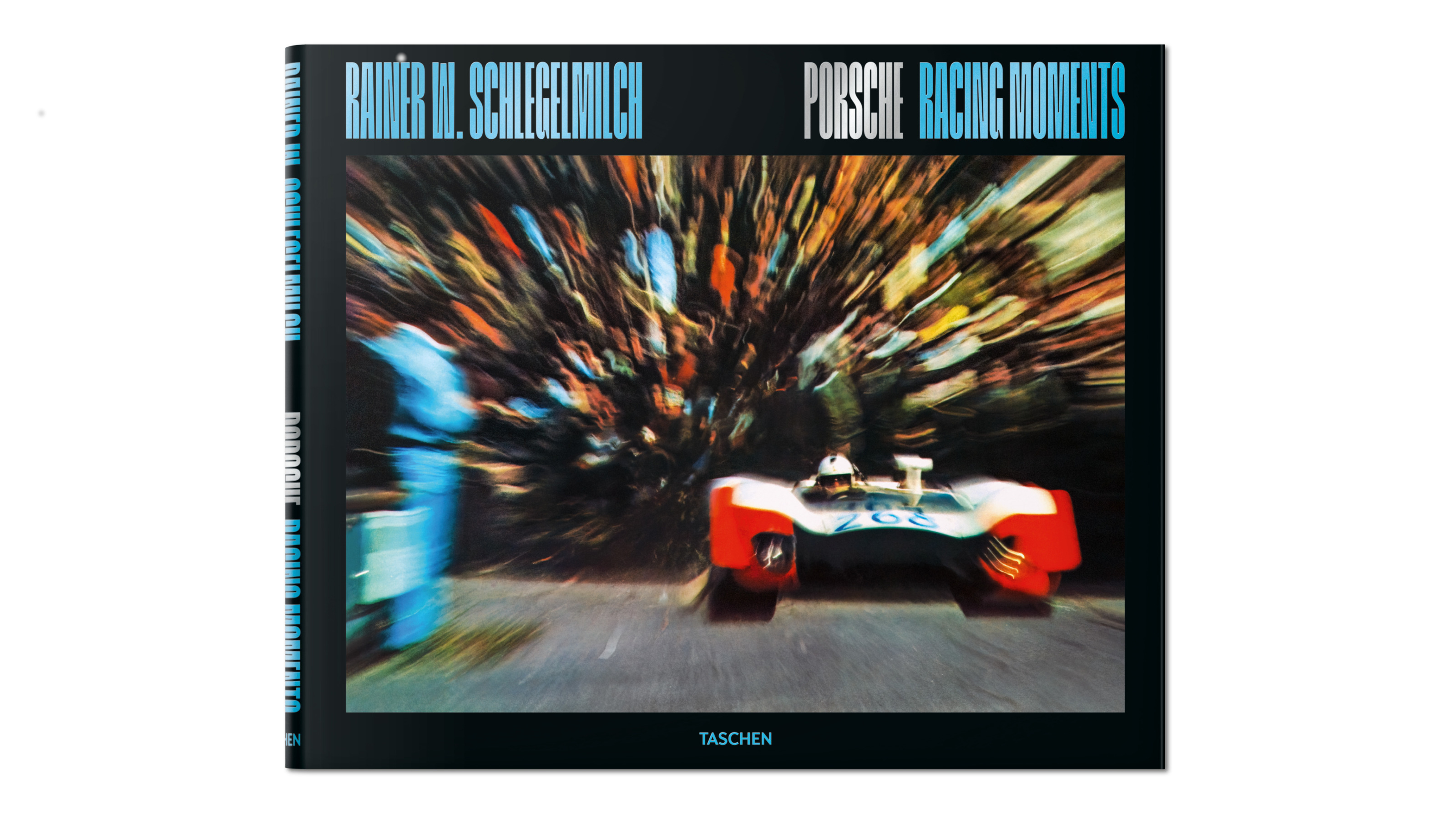 Rainer W. Schlegelmilch's Porsche photography showcases the aesthetics of speed
Rainer W. Schlegelmilch's Porsche photography showcases the aesthetics of speedTaschen's new edition of Rainer W. Schlegelmilch’s collected imagery from a quarter of a century spent following Porsche racing highlights historical machines, emotive camera technique and major moments on the track
By Jonathan Bell
-
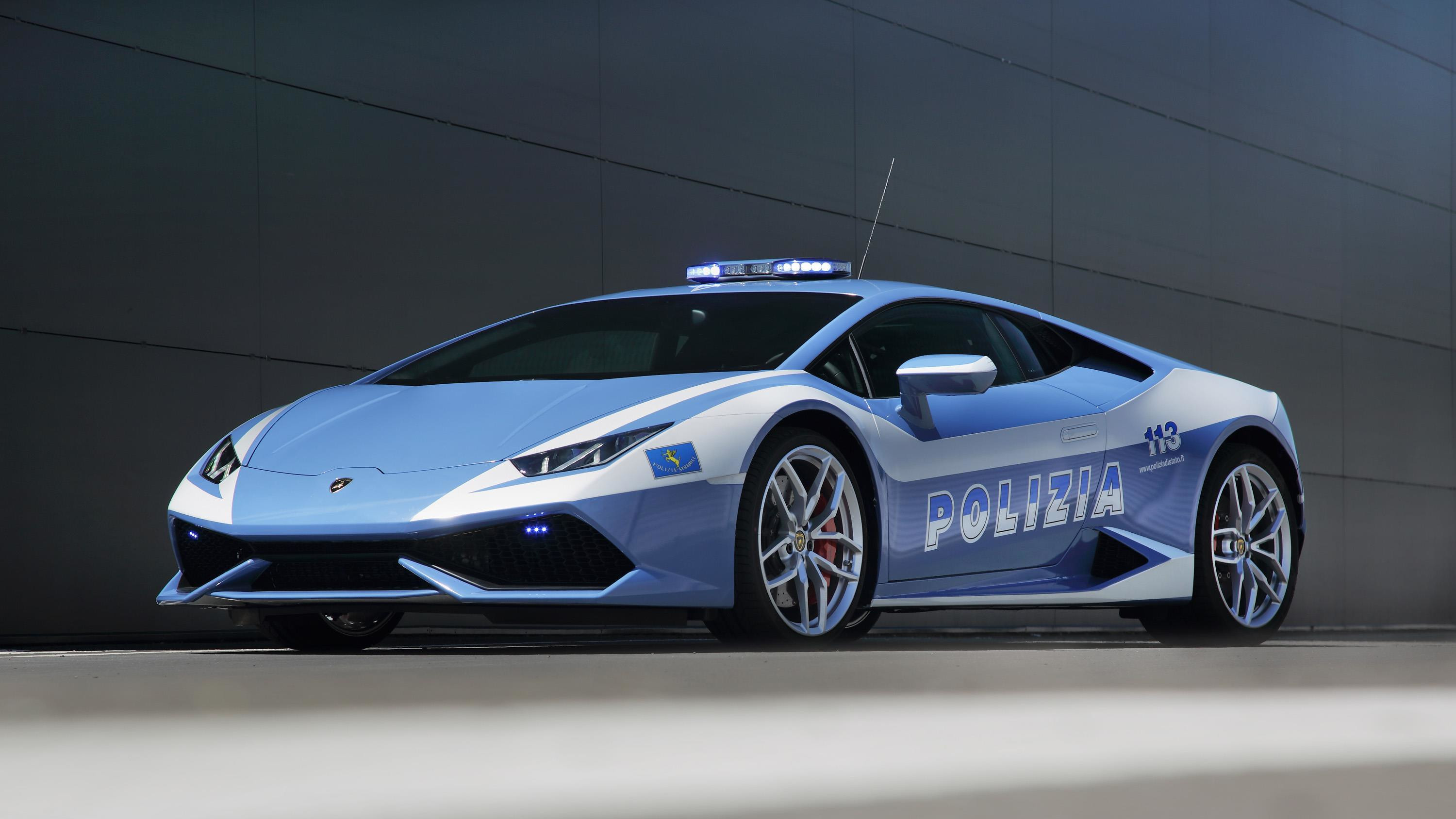 Lamborghini, fast friends with the Italian State Police for two decades
Lamborghini, fast friends with the Italian State Police for two decadesWhen the Italian police need to be somewhere fast, they turn to a long-running partnership with one of the country’s most famed sports car manufacturers, Lamborghini
By Shawn Adams
-
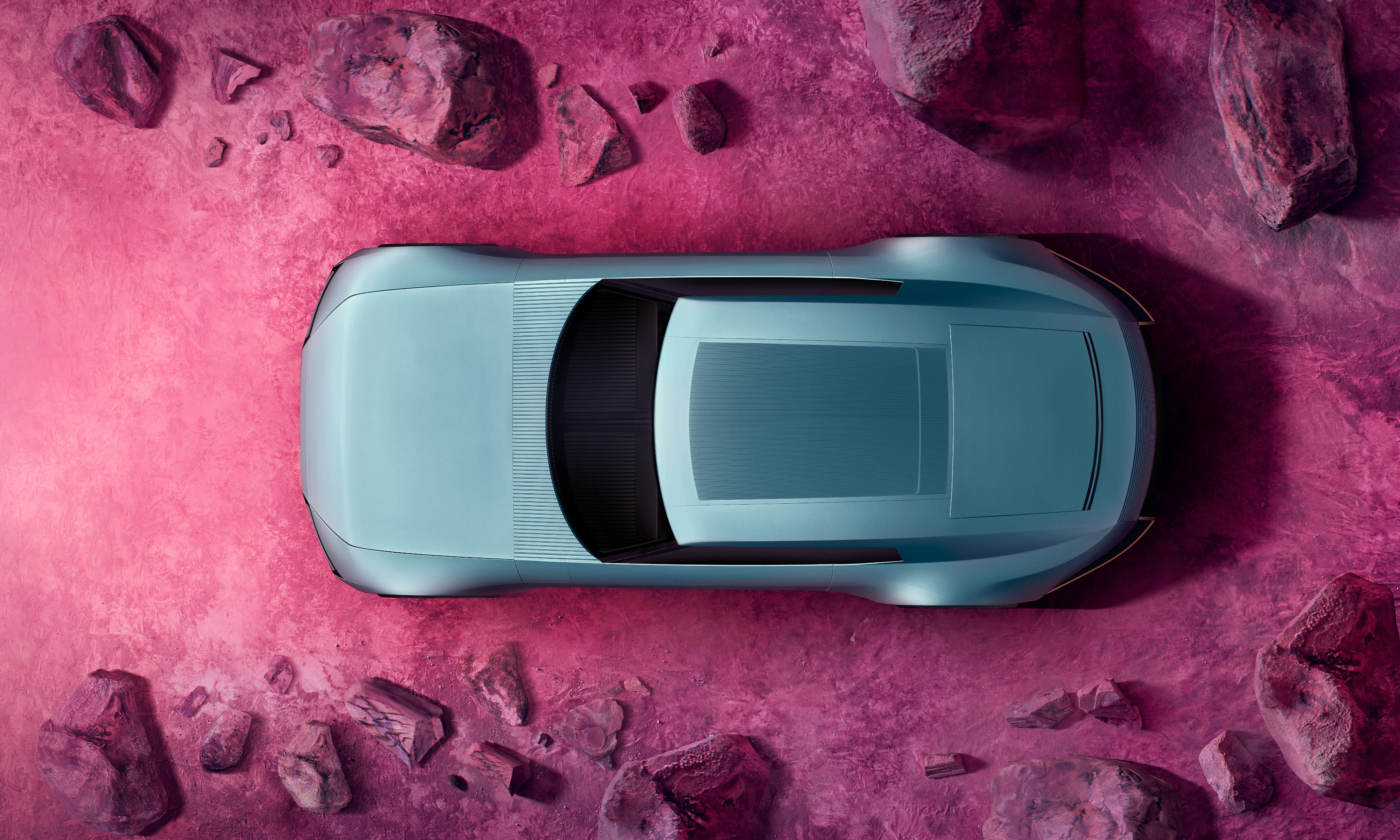 The top 10 concept cars of 2024, as selected by Wallpaper’s Transport Editor
The top 10 concept cars of 2024, as selected by Wallpaper’s Transport EditorWe round up our favourite forays into futuristic design with this collection of concepts and design studies showcasing the transport of tomorrow
By Jonathan Bell
-
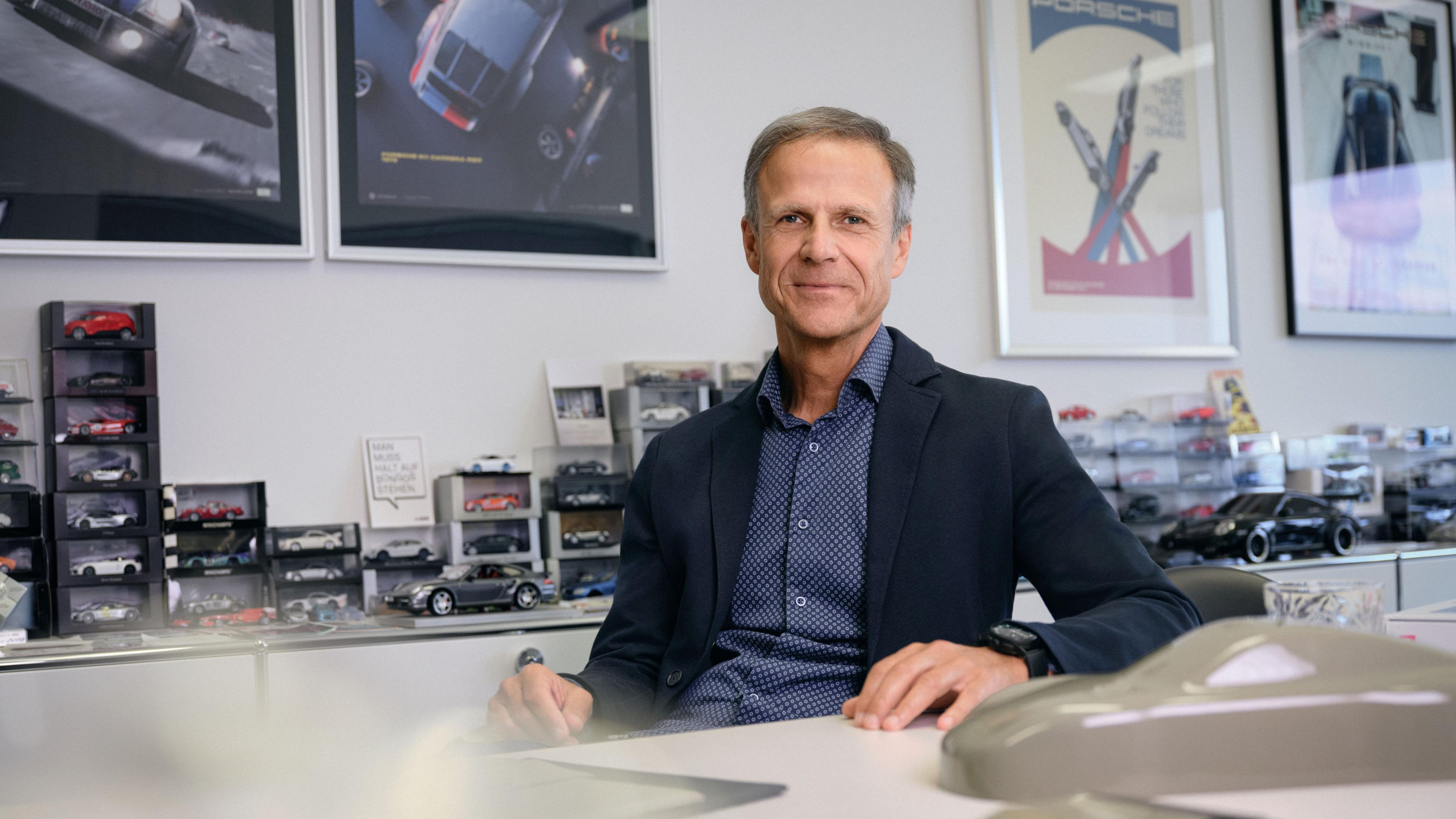 Michael Mauer on two decades at the helm of Porsche’s design
Michael Mauer on two decades at the helm of Porsche’s designPorsche’s signature style has diversified in recent years, thanks to the design leadership of Michael Mauer. We caught up with him to reflect on his 20 years in the hot seat
By Rory FH Smith
-
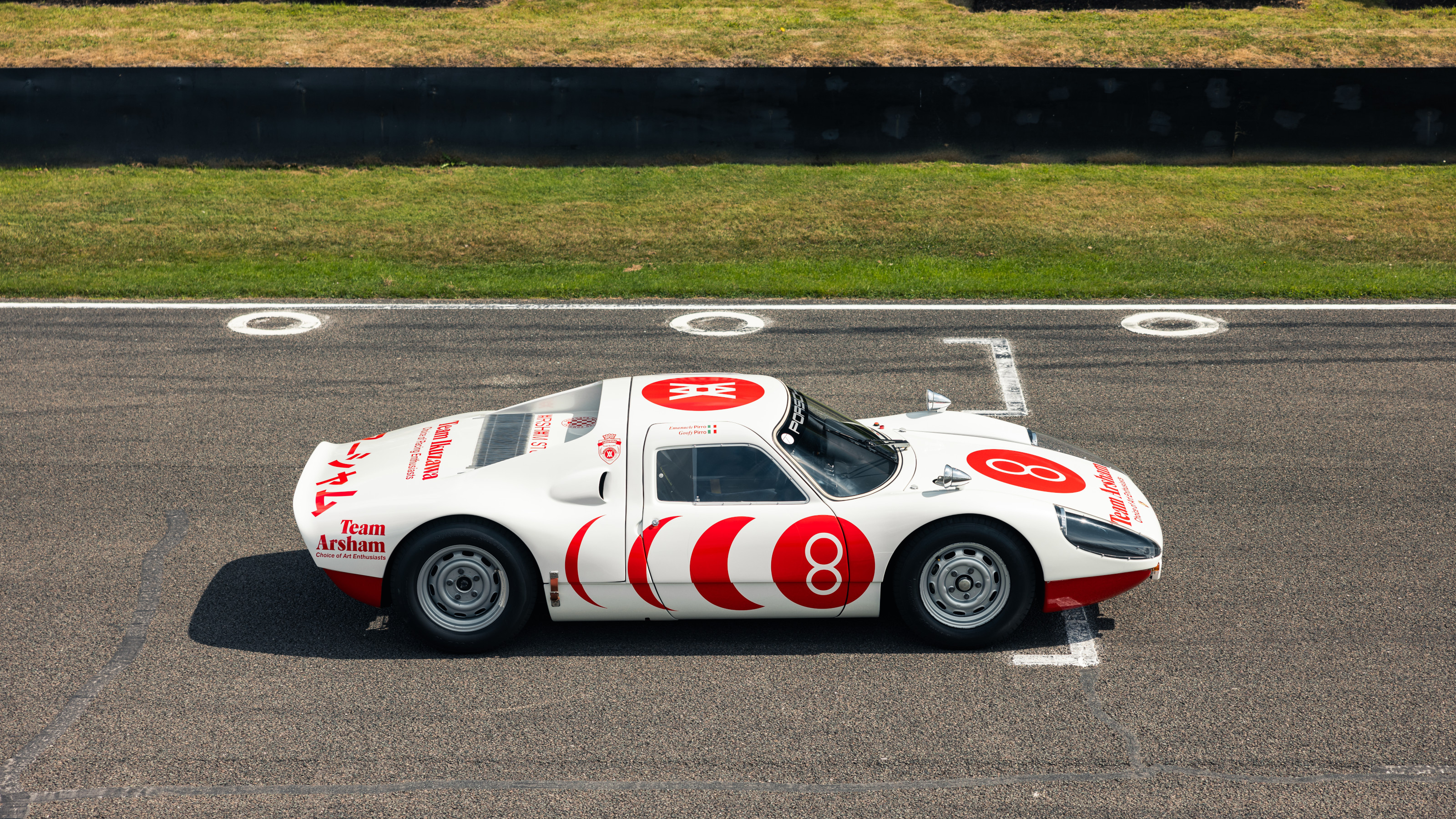 Team Ikuzawa brings the art of Daniel Arsham to motorsport
Team Ikuzawa brings the art of Daniel Arsham to motorsportCreative director Mai Ikuzawa has overseen a new capsule clothing collection, a collaboration with artist Daniel Arsham that also honours her racing driver father Tetsu Ikuzawa
By Josh Sims
-
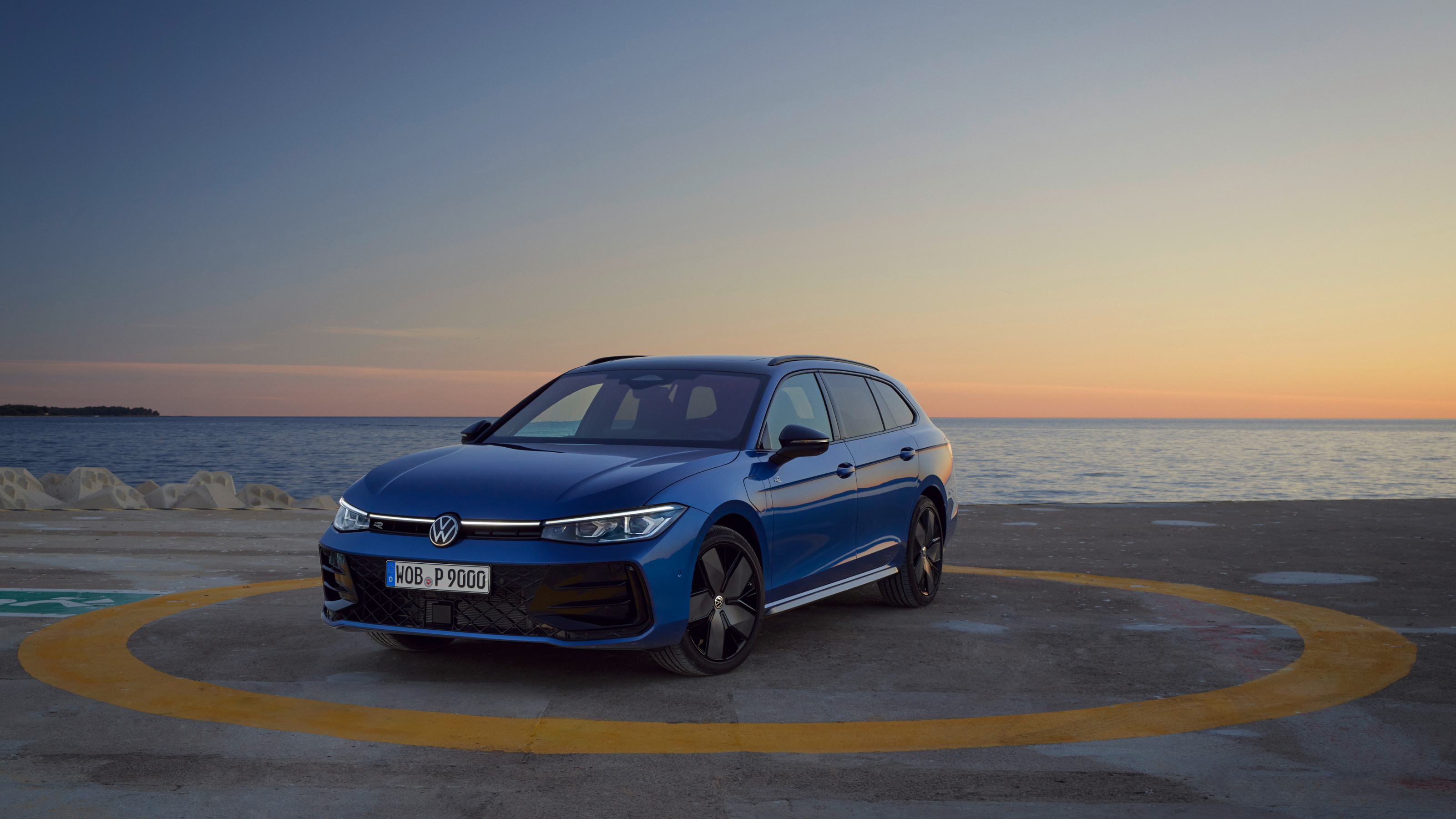 The Volkswagen Passat is a sober, straight edged estate car that feels increasingly out of time
The Volkswagen Passat is a sober, straight edged estate car that feels increasingly out of timeWhy would anyone pass on a Passat? Volkswagen’s big load lugger proves that the old ideas are still the best
By Jonathan Bell
-
 Volkswagen celebrates 50 years of the Golf, its most famous modern model, with a flight of fancy
Volkswagen celebrates 50 years of the Golf, its most famous modern model, with a flight of fancyWallpaper* travelled to eastern Turkey in search of the perfect backdrop to mark 50 years and eight generations of the evergreen VW Golf
By Adam Hay-Nicholls
-
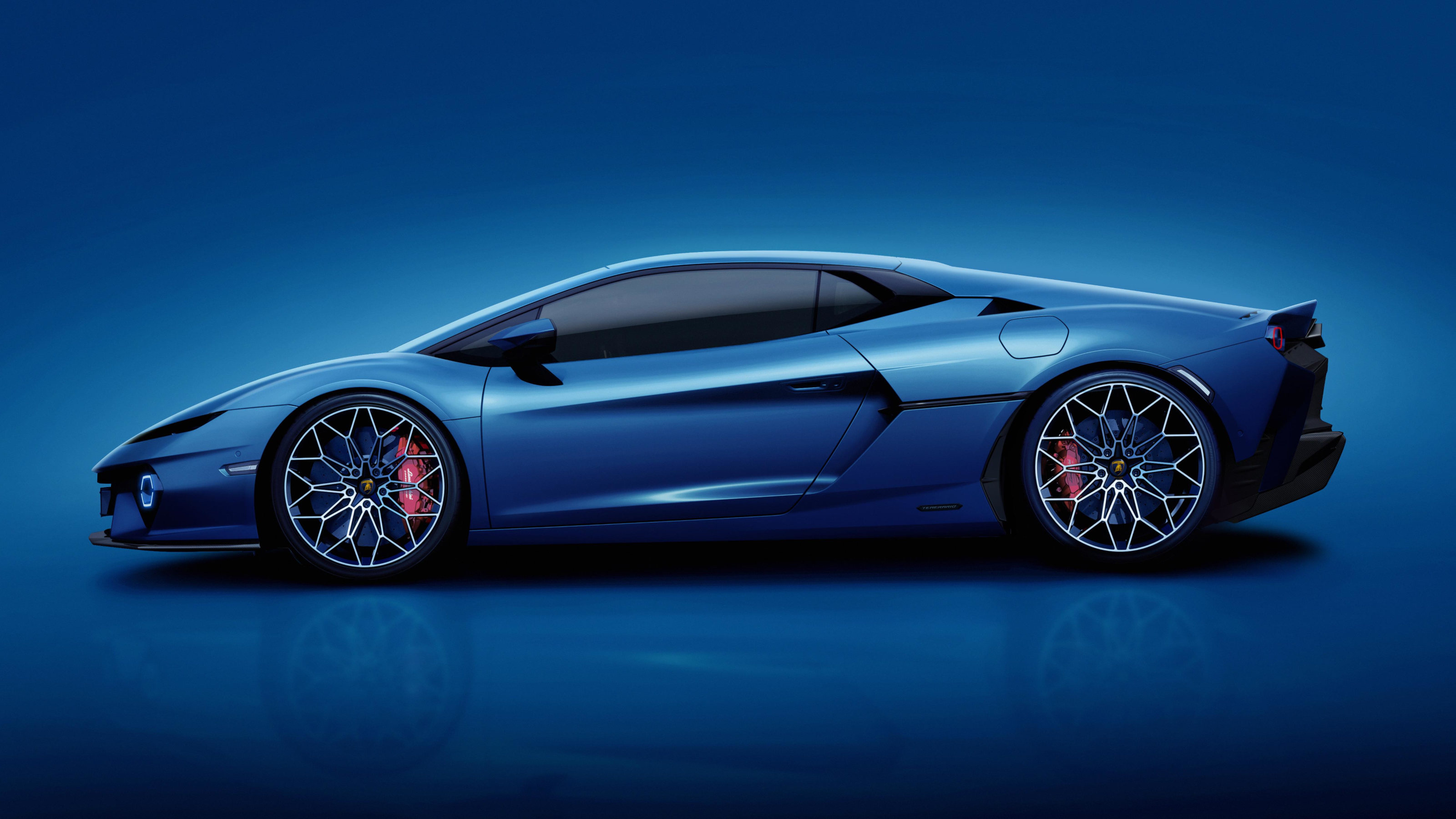 Lamborghini’s Mitja Borkert discusses the company’s new Temerario super sports car
Lamborghini’s Mitja Borkert discusses the company’s new Temerario super sports carThe new Lamborghini Temerario was unveiled this month in California, ushering in a new era of electrified performance to replace the company’s best-selling Huracán model
By Jonathan Bell